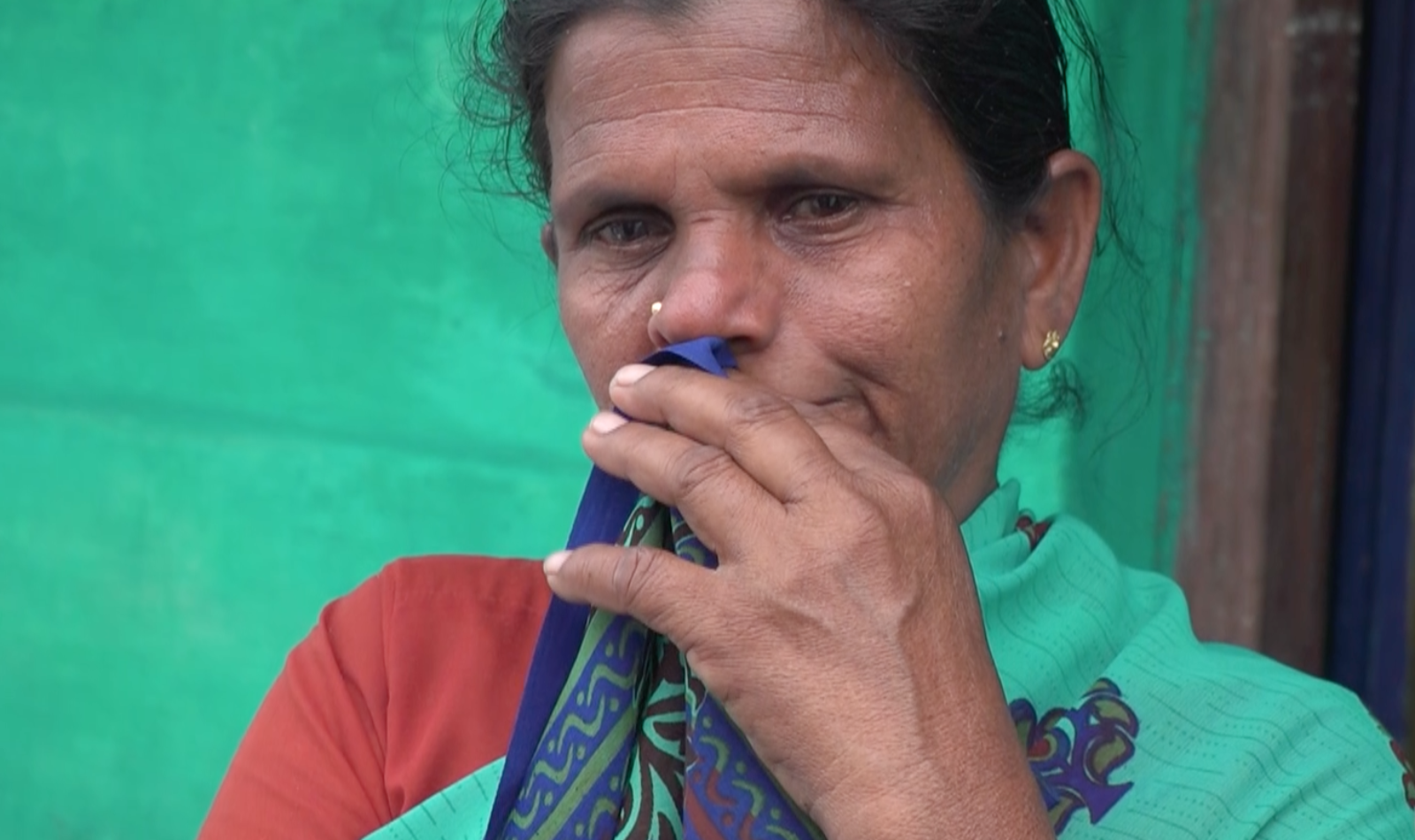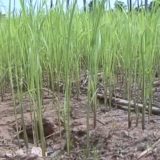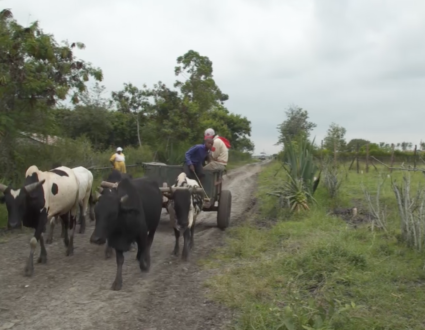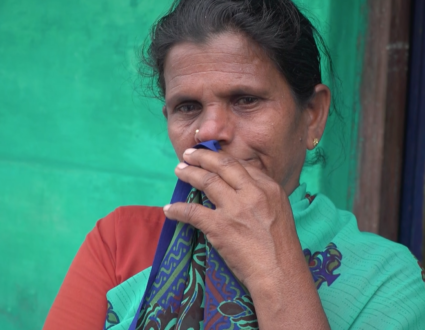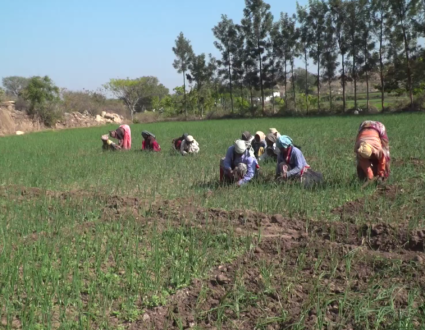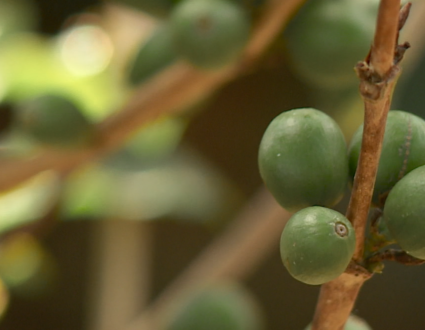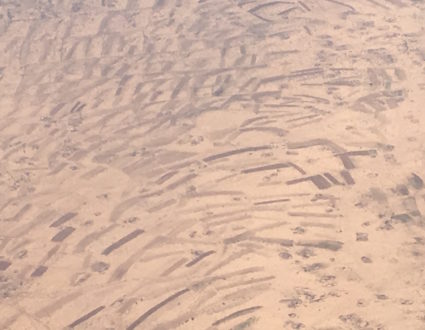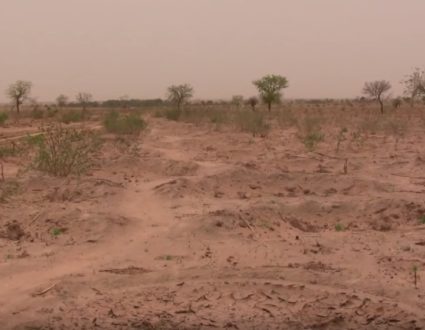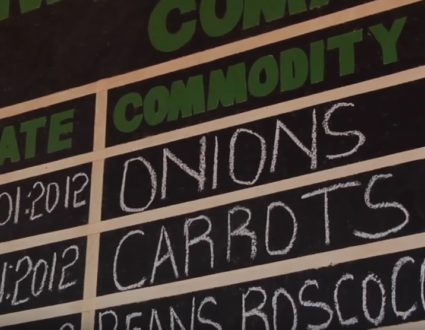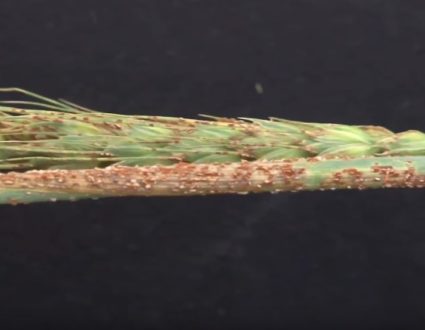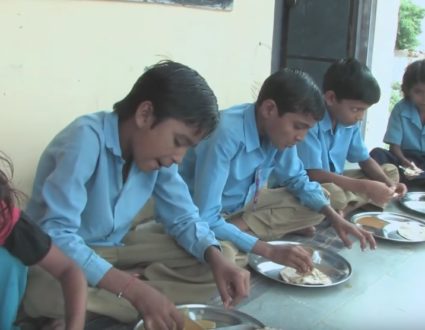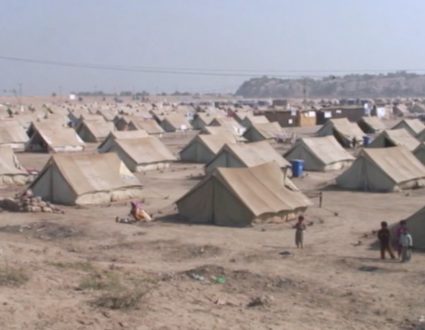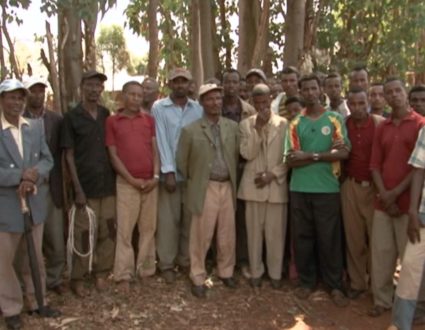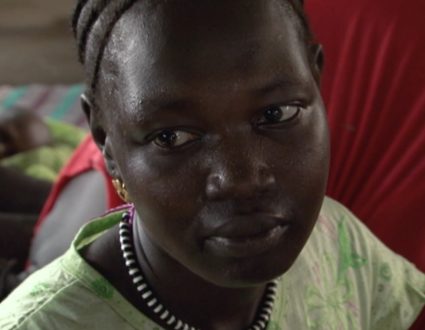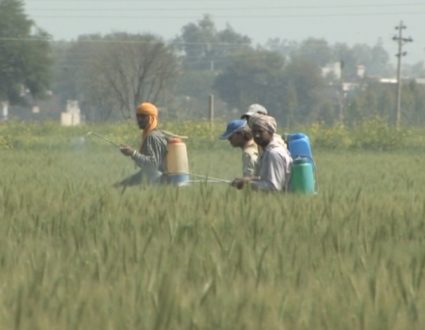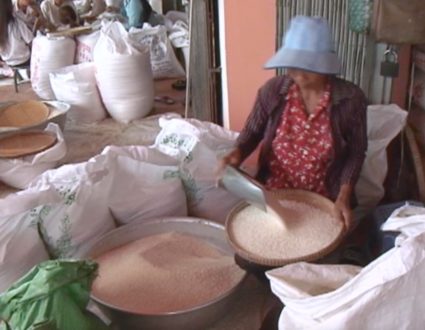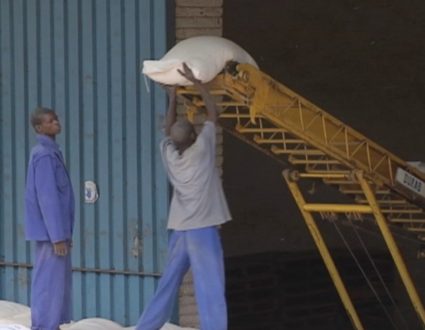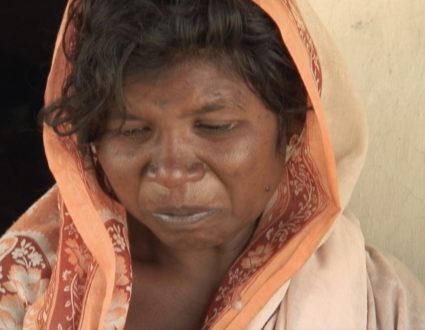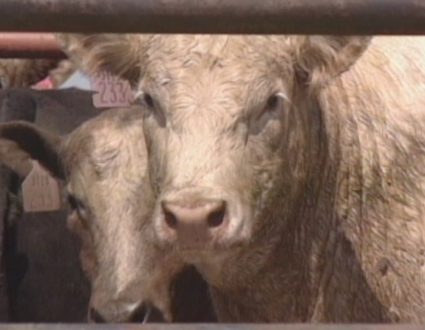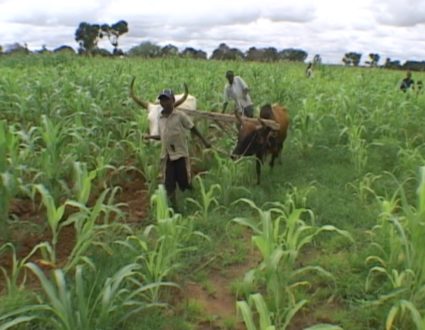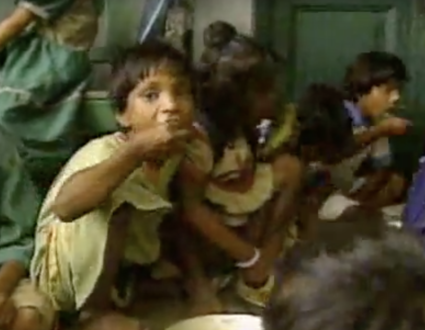Amna Nawaz:
But, first, we continue our series looking at the challenges that India, the soon-to-be most populous country in the world, may soon face producing enough food for its people.
Special correspondent Fred de Sam Lazaro reports on one effort to combat the effects of climate change and environmental degradation.
Fred de Sam Lazaro:
About two-thirds of India’s 1.3 billion people live on small subsistence farms, and they have struggled amid unpredictable markets and weather to eke out a living.
Frequently, farmers from across the vast hinterland have vented their despair. Last year, protesters from the south, suffering after a record three-year drought, carried the skulls of farmers they said had committed suicide to a vigil in the capital, Delhi.
What did you go to Delhi? Why did you hope to achieve by doing that?
Back at her small farm home, 54- year-old Rani told me she’d hoped for some compensation or a waiver from crushing debt used to purchase seed and livestock, a plea she said her husband had made locally to their bank.
Rani Radhakrishnan (through translator):
He told them that there’s been no rain, and the crops have failed and we have no fodder. And they said they couldn’t do anything about it. You need to pay your debts.
Fred de Sam Lazaro:
Her husband, 58-year-old Radhakrishnan, stepped just outside the bank, began drinking pesticide and died.
An average of 12,000 farmers have committed suicide across India in each of the past several years, unable to bear the shame of insolvency, says K. Ayakannu, a farm activist in the southern state of Tamil Nadu.
K. Ayakannu:
We are in poor conditions, so we are unable to purchase anything, we are unable to send our children to school to study.
Fred de Sam Lazaro:
Farmers were left behind, he complains, just as they began to propel the country into the modern age.
In the 1960s, India’s farmers were introduced to new hybrid seed varieties that had been developed by scientists, and this so-called green revolution transformed a country that had long struggled to feed itself into one that now had food surpluses.
Over the next half-century, Indian agriculture became highly commercialized. The country is now among the world’s top exporters of wheat, rice and sugar.
However, in recent years, yields from the new hybrids have leveled off, the crops often vulnerable to disease. That’s driven farmers to use more and more chemical fertilizers and pesticides, which in turn has seriously degraded the soil.
Has the green revolution run its course?
Jagannathan Srinivasan:
In terms of yield, yes — per acre, yes.
Fred de Sam Lazaro:
Climate scientist Jagannathan Srinivasan says the modern commercial seeds still can produce abundant crops. But they require normal rainfall. That’s happening less and less.
Jagannathan Srinivasan:
The real impact of climate change will come after about 30 to 40 years with high temperature. India’s population is going up rapidly still, and so the challenge is to produce more and more food for the population.
Fred de Sam Lazaro:
One approach that’s gaining increasing attention is a return, ironically, to traditional seeds that went out of fashion with the green revolution.
So these are just some of the hundreds, thousands of rice varieties that existed at one point on the planet?
Subhashini Sridhar:
Yes.
Fred de Sam Lazaro:
And you’re trying to retrieve some of them?
Subhashini Sridhar:
Yes.
Fred de Sam Lazaro:
Subhashini Sridhar is a plant scientist with the nonprofit Center for Indian Knowledge Systems.
CIKS and other groups have scoured the farthest corners of South India’s farm country to gather any traditional varieties of seeds that growers still have.
Subhashini Sridhar:
CIKS is in a position to grow these varieties organically, so we are training farmers on growing good-quality seeds.
Fred de Sam Lazaro:
R. Maniappan and G. Bala Subramanian are among 2,800 farmers who are partners in the effort. Last year, they experimented, planting the old varieties in a small corner of their rice fields, which were otherwise seeded with the commercial hybrids.
R. Maniappan (through translator):
It was very dry, not a drop of moisture.
Fred de Sam Lazaro:
The drought singed the entire field, they said, wiping out the commercial plants in just 30 days. But the traditional ones stayed green for up to 70 days.
So you think that they’re much more drought-resistant?
Bala Subramanian (through translator):
They can withstand drought, they can withstand floods, and they can withstand higher salinity.
Fred de Sam Lazaro:
The Center for Indian Knowledge Systems has a pilot project to produce more of these old seeds, so they can be used more widely.
Subhashini Sridhar:
We have grown nearly eight different varieties, out of which six varieties are drought-resistant.
Fred de Sam Lazaro:
They are more drought-resistant than modern commercial seeds, but fall short in one critical trait.
Subhashini Sridhar:
These varieties, which is a maximum of 30 bags per acre, but the modern varieties, 45 bags, if they are grown with the chemicals.
Fred de Sam Lazaro:
The commercial varieties are much higher yield.
Subhashini Sridhar:
Yes, much higher yield.
Fred de Sam Lazaro:
That’s the big hurdle. India needs crops to be both drought-resistant and high-yielding.
In the end, some experts say it will take a combination of old varieties and new technology. But those efforts will take time and won’t help farm families like Rani Radhakrishnan’s. She says she’s broke and hasn’t planted a crop this year. The rains in her area have been well below normal, she adds.
Rani Radhakrishnan (through translator):
I don’t really have any plans. I can’t start a business. I just live day to day.
Fred de Sam Lazaro:
For the “PBS NewsHour,” this is Fred de Sam Lazaro in rural Tamil Nadu, India.
Amna Nawaz:
This story is part of Fred’s series Agents for Change.
His reporting is in partnership with the Under-Told Stories Project at University of St. Thomas in Minnesota.
Living Off the Land
and struggle to eke out a living. Many farmers have felt left behind as crops have failed or diminished due to disease, degraded soil and drought. Now thousands are returning to traditional seeds that went out fashion decades ago — an approach that’s gaining attention.
Classroom resources
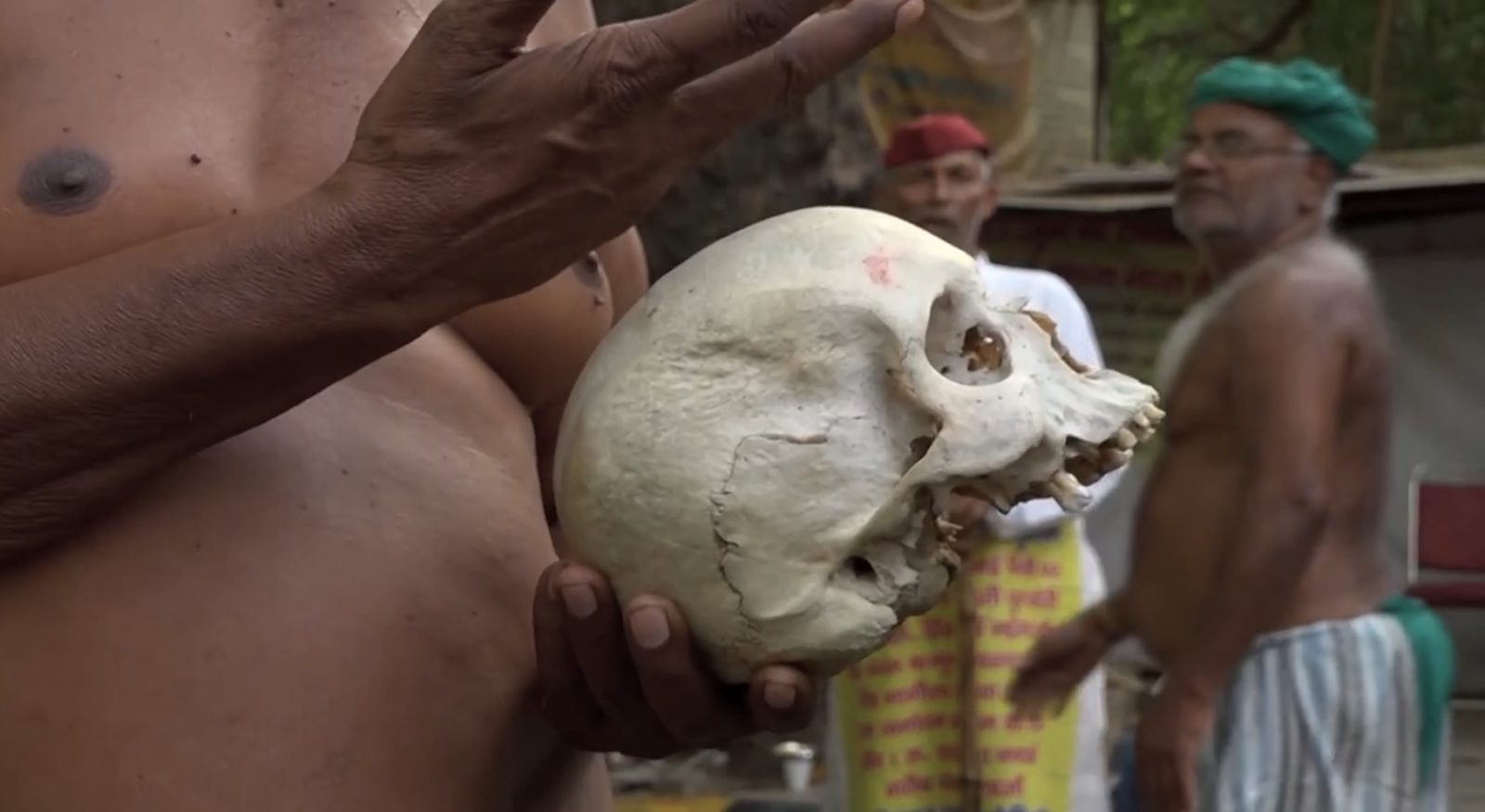
The Mental Toll
An average of 12,000 farmers have committed suicide across India in each of the past several years, unable to bear the shame of insolvency. Protestors, feeling ignored by the state and suffering under a three year drought carried the skulls of farmers they said committed suicide to a vigil in New Delhi.
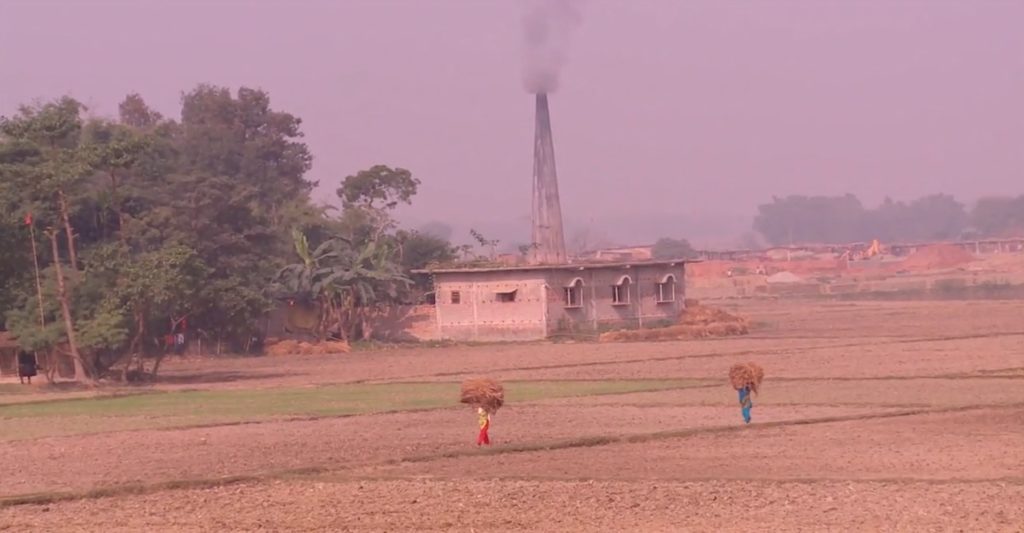
Feeding the Largest Population
India’s 2019 population is estimated at 1.37 billion based on the most recent UN data, and is only expected to keep growing.
